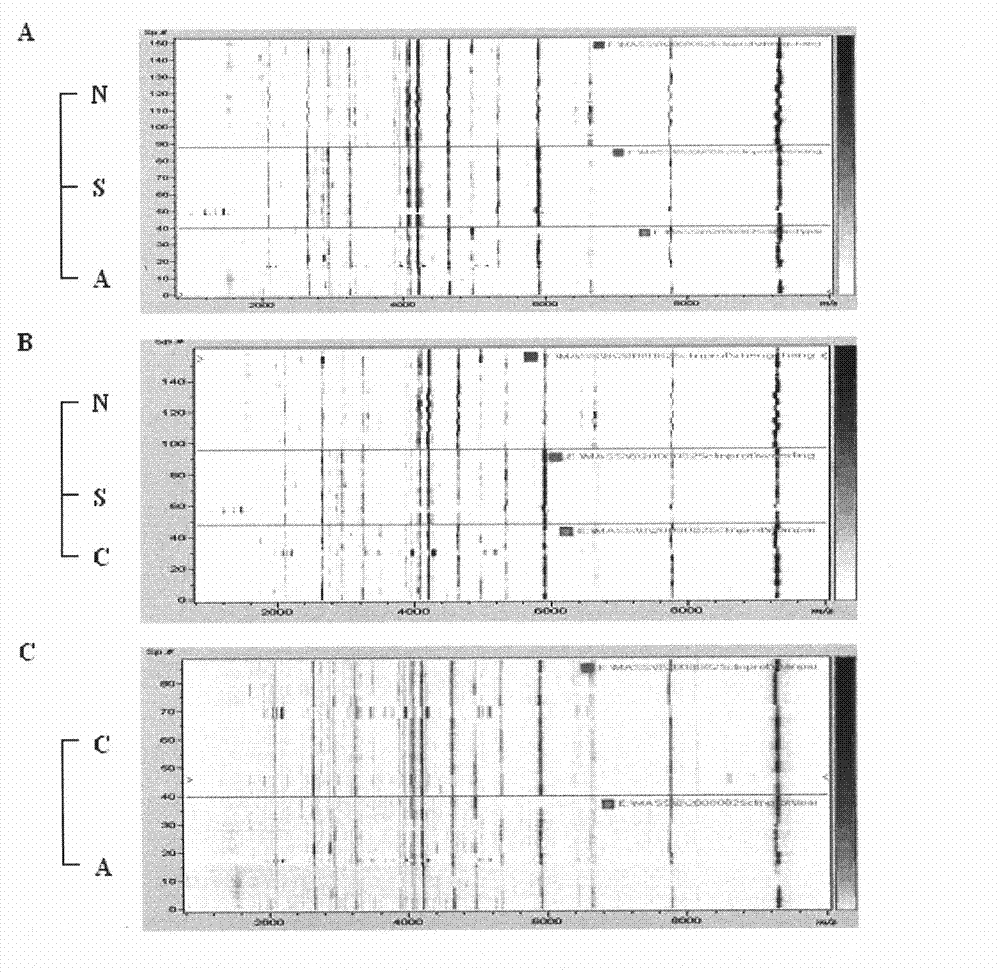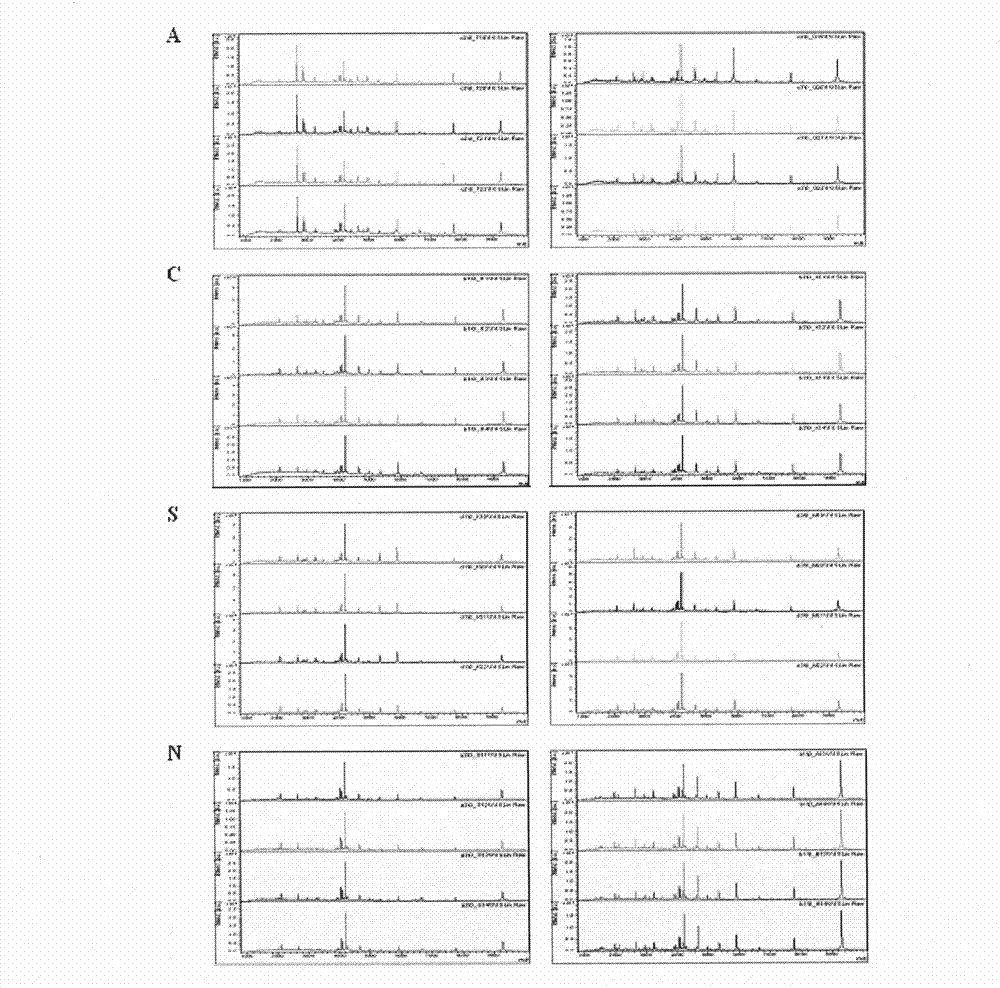Method for detecting serum polypeptide for kidney transplantation rejection
A technology of rejection reaction and detection method, applied in the field of biomedical testing, can solve the problems of pain, high cost, unable to reflect the early changes of the transplanted kidney, etc.
- Summary
- Abstract
- Description
- Claims
- Application Information
AI Technical Summary
Problems solved by technology
Method used
Image
Examples
Embodiment Construction
[0026] 1. Materials and methods
[0027] 1.1 Sample data
[0028] Serum samples were collected from fasting volunteers. 22 kidney transplant volunteers were sick volunteers who were proved to have rejection by renal biopsy, 12 sick volunteers with stable renal function after transplantation, and 13 normal outpatient physical examinations. 3ml of whole blood from volunteers was placed in a biochemical tube, and after standing at 4°C for 1h, centrifuged at 3000r / min for 5min, the supernatant was taken in an ice bath, filled in a portion of 20μl, and stored at -80°C.
[0029] Renal biopsy samples of rejection patients were classified according to the Banff97 classification method. Among them, 10 cases were diagnosed as acute rejection, and 12 cases were diagnosed as chronic rejection. Twelve cases of chronic allograft nephropathy occurred within 1.0 to 5.5 years after transplantation, and 10 cases of acute rejection occurred within 1.0 to 90.0 days after transplantation, all...
PUM
 Login to View More
Login to View More Abstract
Description
Claims
Application Information
 Login to View More
Login to View More - R&D
- Intellectual Property
- Life Sciences
- Materials
- Tech Scout
- Unparalleled Data Quality
- Higher Quality Content
- 60% Fewer Hallucinations
Browse by: Latest US Patents, China's latest patents, Technical Efficacy Thesaurus, Application Domain, Technology Topic, Popular Technical Reports.
© 2025 PatSnap. All rights reserved.Legal|Privacy policy|Modern Slavery Act Transparency Statement|Sitemap|About US| Contact US: help@patsnap.com


